Emerging Modern Agriculture 1920-present




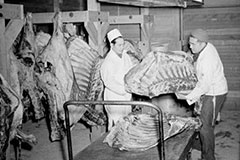

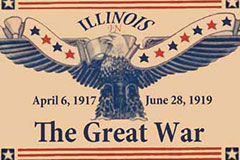

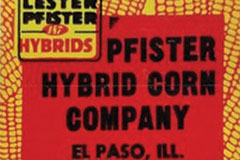

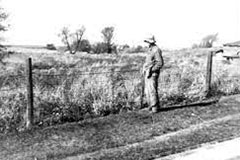

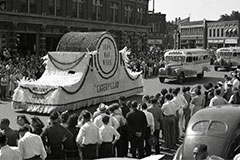





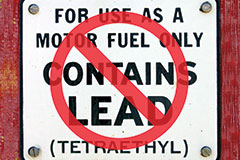

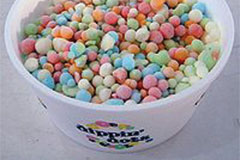



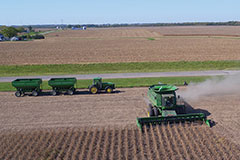

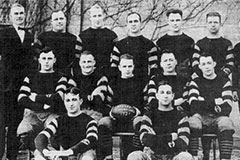

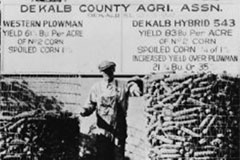



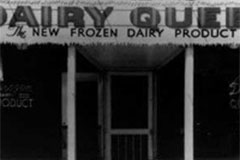

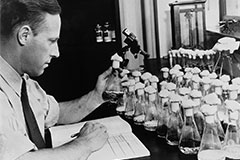

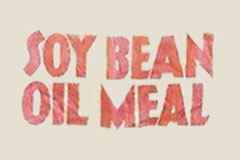

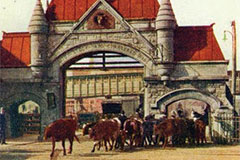








What would you like to find?

Downloadable Media: Emerging Modern Agriculture
Imagery

Audio
























As farmers prospered, big businesses like meat packing grew, especially in Chicago. Workers organized into unions to protect themselves from unfair treatment, and frequently clashed with authorities. Because most people no longer got their food from a local farmer whom they knew, the worried about the quality of products coming out of Chicago. This led to food purity laws and inspections, such as those prompted by Upton Sinclair’s novel The Jungle. He wanted to bring attention to the plight of workers in the meat packing industry, but his description of how meat was processed had a very different effect. Sinclair said, “I aimed at the public’s heart and by accident hit it in the stomach.” Americans bought much less meat, and lawmakers, including President Theodore Roosevelt, quickly passed a law for the inspection of the meat packing industry, beginning the Food and Drug Administration of the U.S. Department of Agriculture. To compete with big businesses, farmers organized themselves into co-ops and Farm Bureaus to get the supplies they needed at reasonable costs and to promote laws that helped farmers. With the onset of World War I, farmers were called upon to produce more food to support the war effort and to provide relief to war-ravaged countries. Gas-powered machines helped farmers to meet these demands. Following the war, surpluses of agricultural products meant to lower prices for consumers, but brought trouble to farmers.
A.E. Staley, Decatur soybean processor forms sports team for his employees. Known as the Decatur Staleys they moved to Chicago in 1921 and became the Chicago Bears after hiring George Halas as coach.
https://www.staleymuseum.com/staleys-bears/


Soybean
The soybean is a native of China, where it has been cultivated for about 5,000 years. The soybean is a legume, not a true bean. Modem soybean plants are from two to three feet high , have leaves with three leaf lets, and bear short fuzzy pods each usually containing two or three beans. Soybeans contain twice as much protein as ordinary beans and 20 percent oil, while ordinary beans have practically none. In the form of sprouts, soy sauce, paste, soybean cheese and curd (tofu), soybeans have been an important source of protein in the diet of Chinese and Japanese for centuries. Also, after boiling, the beans are ground with water to produce a "milk", which is delivered regularly in bottles in Chinese cities. Soy sauce is a brown salty liquid made by fermenting soybeans and rice for periods from 8 months to 5 years. In 1804, the soybean was brought to the United States but it remained little more than a botanical curiosity for almost a century. Then it began to be grown as forage for cattle and as green manure for increasing soil fertility. The boom in soybean farming started in 1922 when the A. E. Staley Manufacturing Company, previously concerned with corn starch, began processing soybeans for oil and meal in Decatur. Increasing from only a thousand acres grown in 1914; in 2005, 9,450,00 acres were planted with soybeans in Illinois, producing 444,150,000 bushels of soybeans worth almost two and half billion dollars. Illinois produces more soybeans than any other state and Decatur, where huge processing plants are located, is known as 'The Soybean Capital of the World'. Soybeans thrive best on the soils of our Com Belt. In only 30 years, high-yielding varieties together with improved farming and processing methods have doubled both the number of bushels harvested per acre and the yield of oil per bushel. Today, over a hundred processing plants produce half of the vegetable oils used in the nation and two-thirds of the oil meal proteins fed to livestock and poultry. Hundreds of other soybean products now enter into the things we eat or wear or use in our daily lives. Soybeans turn up in soap, paper, paint, video tapes, ink, baby food, tofu, cereals, bread, cookies, frozen dinners, pizza, and soymilk.
Questions
Have you used any products made from soy today?
What other agricultural products have many uses?
U.S. Department of Energy , Division of Educational Programs, Newton BBS, Ask a Scientist; USDA Northern Plains Agri cultural Research Labo ratory, Just for Kids, Agriculture; USDA National Agricultu ral S tatistic s Se rvices , Stati st ics by State--Il
One of the largest Illinois contributions to the war effort by Illinois farmers was the farm crop of 1918. Estimated by the Department of Agriculture to be worth $879,697,000 it was the greatest crop in money value that was ever produced by any state in the Union.
https://www.worldwar1centennial.org/index.php/illinois-wwi-centennial-home.html
Tom Roberts began his work with hybrid corn which became DeKalb Seed.
Lester Pfister began his work to breed better corn in 1925 near El Paso, IL.

Because of lowered incomes, farmers were some of the first to experience the Great Depression. The government encouraged farmers to grow fewer crops to control surpluses and keep prices fair. Cities grew as more people moved from farms, including many African- Americans from the south. The construction of Route 66, a highway connecting Chicago with Los Angeles, brought busines to towns along the highway and insured that Chicago remained an important transportation hub. During the Depression, the government hired people to work on some of the locks and dams, important to Illinois—in many cases the last work that has been done on these important waterways. Scientists developed corn hybrids that were easier to grow and found ways to make milk and meat substitutes from soybeans. In the 1930s, thanks to the farm bureaus and co-ops, decent roads and electricity finally came to rural communities. World War II pulled the American economy, and its farmers, out of the Depression. Illinois farmers provided products that went to aid the war effort. In addition to food, people began to find more uses for agricultural products. For example, the USDA’s Northern Regional Research Laboratory in Peoria discovered a way to speed the production of penicillin using corn byproducts. The government stockpiled extra food produced by farmers, and imposed rations to prevent shortages. Because the government was subsidizing consumers’ purchase of food, after the war people continued to demand these artificially low prices, again hurting farmers who struggled to stay in business.
Beginning with the stock market crash of 1929, millions of Americans were affected by the Great Depression.

WWII and Labor
This interview with Anna Novak, a Chicago worker during the Depression, was taken as part of the Federal Writers' Project, on May 1, 1939. Anna Novak grew up in an orphanage in Wisconsin. She then came to Chicago and lived near the stockyards for fourteen years. Her home was four very small rooms in the back of a store, reached by a board walk . The house is partitioned, with another family living in three side rooms, sharing the toilet. "I've had eight years of the yards. It's a lot different now, with the union and all. We used to have to buy the foremen presents, you know....You could get along swell if you let the boss slap you on the behind. I'd rather any place but in the stockyards just for that reason alone. I tried to get out a couple of times. Went to work for Container Corp. (box factory near the yards) . Used to swing a hammer on those big wooden boxes. Look at my hands, now. (Her hands are misshapen; blunted, thickened fingers and calloused at every joint.) My husband wouldn't let me keep on there, it got to be too much for me to handle. I had to have work so I went back to the yards. I worked in the canning rooms and in sausage packing at Armour's. . . Here's one thing the union changed while I was in Armour's. Like the white girls in Armour's if they work 15 years they have some kind of honor system and they usually get better work. A little easier job, you know. What do you think they give the colored girls who work that long? They give them a black star, pasted on their time cards! They hardly ever get a chance at anything but the dirtiest, wettest jobs, that even the white men can't stand or just wouldn't take. And then that star business is such an easy way for the bosses to spot the colored women so that they won't accidentally give a good job to one, in some emergency. The union is putting the heat on that particular practice. You should see, sometimes I'll be up early in the morning, and just sit down at the window, you know, and watch old ladies, 70 years old and more, going to work in the yards, so bent over and shriveled up and sick it makes you want to cry just watching them, such old, tired women, grandmothers most of them. The bosses make it so miser able for them, too. They should give them the easier jobs, at least, if not a pension for them after they get so old.... Sometimes some of us change jobs with them for a while if the foremen aren't around, but when they catch us we get bawled out. They want to make the old ladies quit, see."
"One thing, you should see the rash the girls get, those that have to handle poisoned pork. And the acids from cans, it just gets you so that you can't stand up. You don't know what 's the matter with you but work you can' t to save your life. Then it's so easy to catch cold, one girl working right next to another coughs and you know she can't tum around, she's got production to make on a line, and there you are. The whole table of girls will be coughing and sneezing over their work. A girl can't take time off on account of a cold, the company wouldn't let them and they can't lose all that pay, anyway. Another thing , in our department we have two toilets for 100 people, girls. You should see before we got the union, you could scrape the muck off the floor with a knife.... It's things like that the union is here to prevent from happening, and to see that when some worker does meet an accident she won't be thrown out on the dump heap, maimed and thrown a little compensation that wouldn't last a year. The companies can't get away with that anymore. People know more."
Questions
How did unions and the government affect the lives of workers during the Great Depression?
What changes still needed to be made?
Why were people willing to work in these conditions?
How would you feel as a worker in the Depression?
Library of Congre ss, American Life Histories: Manuscripts from the Federal Writers' Project, 1936-1940

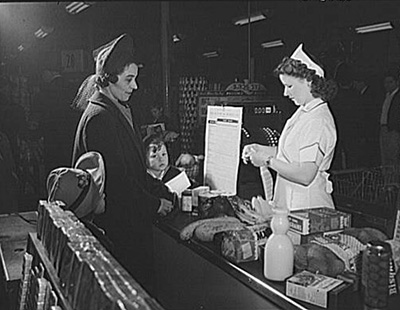
Food Stamps
With its roots in the Great Depression, the Food Stamp Program was designed to provide a nutritional safety net for low-income households while boosting demand for domestic agricultural products. Ration coupons supplemented food stamps during World War Il stamp books were required for meat, sugar, coffee, shoes, rubber, auto parts, and gasoline. One woman tells about her experiences during the war: "On December 7, 1941, the Japanese attacked Pearl Harbor and the United States entered World War II. Things we took for granted like filling up the gas tank of our car, or buying things at the grocery store that we wanted, not only what we needed, came to a stop. We had two children now. I had a little girl, Anne, who was born the previous September, 1940. We learned quickly about rationing, as each family received War Ration books with food stamps and there were limits placed on gas. I kept busy with my family and volunteering in any capacity I could as our country pulled together. Many of our friends were in the service and I wrote letter after letter to help keep their spirits up at this difficult time. The war was stressful on everyone and we had to each do our part . My husband, Fred, worked as a crane operator and was an Air Raid Warden in our community. I managed things at home by planting a victory garden. Trading items with neighbors and saving everything so there was as little waste as possible."
Questions
How did food stamps and rationing help people during the years of the Depression and World War II?
What were the advantages and disadvantages of these programs for farmers?
USDA , Amber Waves: The Economics of Food , Farming, Natural Resources , and Rural America: "Food Stamps and Obesity: Ironic Twis t or Complex Puzzle?" USDA , The Food Stamp Program; USDA, "National Agricultural Sta tis tics Service: An Evolving Statistic
Sherb Noble opens first Dairy Queen in Joliet, Illinois.
After the bombing of Pearl Harbor and the U.S. entry into World War II, over 1.9 million Illinois citizens served in the U.S. military in World War II. Caterpillar Equipment, headquartered in Peoria provided machines to the war effort with an increasing number of female employees.
https://www.bnd.com/news/local/article211348894.html
Dr. Andrew Moyer begins researching increased yield of penicillin in Peoria at the USDA Ag Research Center.
https://www.ars.usda.gov/oc/timeline/penicillin/

As Europe began to recover from World War II, in needed more grain to feed its growing population. The Illinois Farm Bureau sent representatives on trade missions to Europe, and encouraged the government to use agricultural surpluses to help developing nations. America’s population continued to move to cities, but many of those people were still involved in agriculture-related businesses, such as working for farm bureaus, processing food, shipping or selling agricultural products, producing and selling agricultural products, processing and selling farm machines, educating in the field of agriculture, and working as rural teachers, ministers, and doctors. There were fewer farms, but the farms were larger to produce the goods people in the U.S. and the world needed. Fast food like McDonalds developed in Illinois during this time. Drive-ins, corn syrup-used to make sweets, and popcorn also became popular. Grain embargoes in the 1970s hurt farmers because they could not export their surpluses overseas, causing prices to rise and profits to drop. Rising gas prices and fuel shortages caused hardships for farmers and their customers. These fuel shortages, and environmental concerns, led to new innovations in agriculture. Scientists developed environmentally friendly and renewable fuels made from corn, used in ethanol, and soy, used in biodiesel. Bioengineers developed types of plants and animals that were easier to raise. The 1980s saw a farm crisis as the economy put many farmers out of work. The remaining Illinois Farmers found business with more overseas markets, such as Asia, while still working to meet the needs of American customers.
Soybean meal becomes available as a low-cost, high-protein feed ingredient causing a boom in U.S. livestock production.
Roy Kroc opens first McDonalds in Des Plains, Illinois.

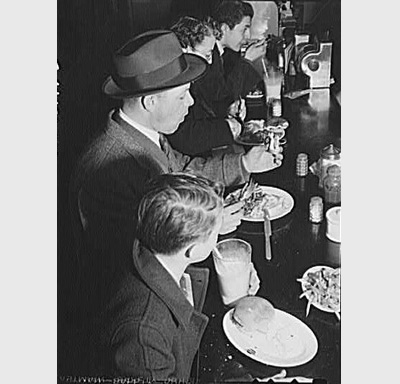
Hamburger
There is debate over the history of the hamburger and who deserves credit for its invention, but there is no disagreement about the global fame it has achieved over the past few decades as a result of the growth of the fast food industry. Every day around the world, millions of them are sold in thousands of restaurants. A number of cooks and restaurants claim to have invented the modern hamburger. One of the earliest events at which a burger in a bun was sold was the 1904 World's Fair at St. Louis, Missouri. It wasn't until the 1920s, however, that hamburgers became the centerpiece of a new concept for American restaurants, where they sold for five cents each. After World War II, the number of restaurants specializing in fast food grew tremendously. Franchising is a feature of fast food restaurants that has contributed to their growth and created opportunities for individuals to own their own business. To take one brand name as an example, McDonald's is an international chain with its headquarters in Oak Brook, Illinois. Each McDonald's restaurant--there are over 39,000 in 120 countries--is owned by an individual, who is trained by the company. In the 1950s the first McDonald's franchise was opened in Illinois. From its inception, fast food has vied up to its name. In the early days of fast food, as Americans cam to depend more on their cars, the drive-in service that allowed customers to park and eat in their cars. A server, or "carhop," brought the food outside to the customers so they could eat without leaving their cars. This led the fast food industry in America to become closely associated with the automobile and reduced the cost of operating a restaurant, establishing relatively low prices. Now "drive thru" service is popular. Customers can order, pay, and leave without turning off the motors of their cars. Many even eat as they drive! For many people, fast food has become symbolic of a fast-paced lifestyle that is neither natural nor healthy. But whether you prefer hamburgers over cheeseburgers, or another kind of fast food, or whether you avoid fast food altogether, there is no denying that the hamburger and the fast food industry have changed the way a lot of people eat.
Questions
What do you like about fast food?
What would make it healthier?
How do you think fast food has influenced America and its agriculture?
(Sources: U.S. Department of State, Bureau of Educational and Cultural Affairs, Office of English Language Programs, English Teaching Forum Online , "Fast Food World: The Hamburger Comes of Age," by William P. Ancker .)
Chicago Union Stockyards close after 106 year in operation.
Environmental Protection Agency begins to phase out leaded gasoline making way for corn-based ethanol production.


Food Exports
Following World War II, European nations looked to the United States to help supply their need for food. In the early 1950s, the desperate condition of agriculture throughout the Soviet Bloc even led the CIA to undertake its own forecasts and estimates of crop production. In the 1970s there was a boost in foreign demand for U.S. farm products, but the U.S. began to suspend trade with some nations whose politics it did not agree with, and some nations had trouble paying for the grain because of economic problems. In 1980, President Jimmy Carter announced a grain embargo against the Soviet Union because of that country's invasion of Afghanistan . This meant that the Soviet Union could not buy grain from American farmers. Because of these events, Congress and other Americans have debated over the implications of using food exports to advance U.S. foreign policy objectives.
Questions
Who is affected when the government restricts the export of food?
Do you think embargoes are a good idea? Why or why not?
Central Intelligence Agency, Center for the Study of Intelligence , Watching the Bear: Essays on CIA's analysis of the Soviet Union, Chapter II: CIA's Analysis of the Soviet Economy. The United States Senate Committee on Agriculture


Biofuels
Biofuels are fuels made from renewable resources like com and soybeans instead of nonrenewable resources like petroleum. These biofuels also have less impact on the environment. Follow this link from the USDA to learn more about biofuels.
Questions
How much does gas cost right now?
What is a renewable resource?
Why are biofuels important?
https://www.ers.usda.gov/about-ers/partnerships/strengthening-statistics-through-the-icars/biofuels-data-sources/#four


Soil
When soil is used year after year, it can lose the minerals plants need to grow. Fertilizers can help farmers produce more food, but some fertilizers can have a negative environmental impact, especially if they run off into streams, lakes, or the ocean. Many scientists and farmers are trying to find less harmful fertilizers, and teaching farmers how to use fertilizers carefully or use other methods to conserve the fertility of the soil, such as crop rotation and planting certain plants together.
Questions
Why do farmers need to use fertilizers or other methods to help the soil?
What responsibilities do people have to take care of the environment?
What ways do you know of to help plants grow without hurting the environment?
USDA, Economic Research Service , Fertilizer Use

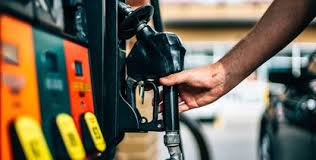
Fuel Prices
Visit this website from the U.S. Department of Energy to find out more about current and past fuel prices.
Questions
How much does fuel cost in your region?
How do these prices compare to prices a year ago? A week ago?
How do gas prices affect farmers? How do they affect you?
Based on what you've learned, what kind of fuel would you rather use for your vehicle?
https://www.eia.gov/petroleum/gasdiesel/

Illinois continues to provide food and products to meet the needs of America and the world. Important Illinois crops include corn, soybeans, horseradish, pumpkins, wheat and apples. Illinois also produces hogs, cattle, poultry and sheep as well as dairy products. Agritourism, like corn mazes and roadside stands, is also popular. With increased concerns about preserving the beauty and resources of our planet, Illinois farm products are used to make a variety of environmentally friendly goods. Cornstarch is used to make biodegradable plastics that do not clutter landfills, and environmentally friendly ethanol fuels come from corn. Soybeans are used as substitutes for milk and meat, to make cooking oil and animal food, to create biodiesel, to make ink, and to feed people in developing countries. Illinois farmers and scientists also work to conserve soil and water. The Mississippi continues to be an important avenue for transporting agricultural products. The river makes it easy for Illinois farmers to export corn and import grains from neighboring states to feed its populations. This keeps prices lower for everyone and that means the need for work on the Mississippi’s system of locks and dams is still an important topic for farmers and consumers. Genetic engineering may help develop better plant and animals, but people are still debating the safety of these processes. Moving forward, Illinois scientists are farmers are continuing to provide the agricultural products and innovations that are bringing America into the future.
Dippin' Dots, Ice Cream of the Future founded in New Grand Chain, IL.
Soybean oil based crayons first appear on the market.


Hypoallergenic Soybeans
Soybeans are used in everything from ink and biofuels to baby formulas and salad dressing. But this so called miracle crop is not for everyone. Worldwide, six to eight percent of children and one to two percent of adults suffer food allergies. Soybeans are considered one of the "big eight" food allergen sources, along with eggs, milk, peanuts, wheat, fish, shellfish, and tree nuts. Those allergic to soybeans must avoid eating foods containing its proteins. Scientists have discovered that one protein in soybeans, named P34, is what causes many allergic reactions to soybeans. "Soybeans are in many processed foods, and here in the Western Hemisphere it's hard to avoid them unless you're very careful," notes scientist Eliot M. Herman, who discovered P34 in the early 1990s. Now, using a biotech approach, he and colleagues have shut off the gene that makes the allergenic protein in the crop's seed, meaning people with soy allergies might be able to eat soybeans from these altered plants. "T his is probably the first time a dominant human allergen has been knocked out of a major food crop usin g biotechnology," says Herman, a USDAAg1icultural Research Service plant physiologist. Although scien tists appear to have shut off the gene for making P34, farmers are not likely to see the knockout soybeans commercialized just yet. More tests are needed to prove they are indeed hypoallergenic, or less allergy causing . So far, though , the researchers are encouraged by early results.
Questions
Who do you know that is allergic to some foods?
Why could it be good to change plants so more people can eat them?
What concerns do you see with this process?
USDA News and Events, "Rese archers Develop First Hypoallergenic Soybeans"
The worst flooding in state's history to date in western and southern Illinois caused $1.5 billion losses in crop and property damage.

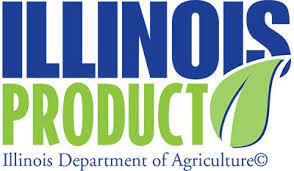
Illinois Dept of Agriculture
Illinois produces corn, soybeans, dairy, pumpkins, and many other products. Go to this web page from the Illinois Department of Agriculture to learn more about modern Illinois agriculture and its importance.
Questions
What Illinois agriculture products have you eaten or used today?
Who do you know who works in a job related to agriculture?
Why is agriculture important to everyone?
https://www2.illinois.gov/sites/agr/About/Pages/History-of-The-Illinois-Department-Of-Agriculture.aspx

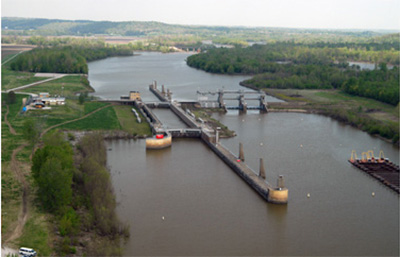
Locks and Dams
The Upper Mississippi River and Illinois River waterways are the leading routes for the export of U.S. grain. In 1996, approximately fifty-four percent of all U.S. com exports and forty percent of all soybean exports were loaded on barges on these waterways above St. Louis, Missouri. These two rivers also serve as a major transportation route for other products, including fertilizer, coal, steel, cement, and petroleum products. The development of these two rivers into a reliable transportation system required significant investment by the Federal Government. Navigation on the Upper Mississippi, Illinois, and Kaskaskia Rivers is possible because of a series of locks and dams, which regulate the water levels of the river so barges and boats can travel on it. Following the passage of the Rivers and Harbors Act of 1930, the Army Corps of Engineers constructed these locks and dams on the Mississippi, Illinois, and Kaskaskia Rivers. Most of these structures were completed in the 1930's and have reached or surpassed their capacity, and many of them are in need of repair. At several locks, barge shippers have experienced traffic-induced delays that threaten the economic value of the system. To determine the need for and location of new structures, the U.S. Army Corps of Engineers has initiated the Upper Mississippi River-Illinois Waterway Navigation Study.
Questions
What is an export?
Why are the locks and dams on the Mississippi River important?
What would happen if barges and boats could not travel on the river?
U.S. Army Corps of Engineers, Upper Mississippi Valley Division
Walmart begins packaging materials in corn-based plastic.


Popcorn
Popcorn is the official snack food of Illinois. Scholars agree that corn, including popcorn, originated in the Americas. European explorers throughout the Americas were introduced to, and intrigued by, popcorn. Around the year 1612, early French explorers in the Great Lakes region noted that the Iroquois popped pop corn with heated sand in a pottery vessel and used it to make popcorn soup, among other things. European settlers sometimes ate popcorn with sugar and cream for breakfast. Some colonists popped corn in front of their fireplace. Popcorn was still very much a small, home-grown crop. Popcorn caught on during the 1890s and was popular even through the Great Depression. Street vendors, pushing steam or gas-powered poppers, were a common sight at fairs, parks, and expositions, and restaurants also began to sell the fluffy snack. During the Depression, popcorn at 5 or 10 cents a bag was one of the few luxuries struggling families could afford. While other businesses failed, the popcorn business thrived. In the 1940s, scientists created popcorn hybrids that grew well in the com belt for commercial use. During World War II, sugar was sent overseas for U.S. troops, which left little for making candy. Thanks to this unusual situation, Americans ate three times as much popcorn as usual. Popcorn sales dropped during the late 1940s, however, when television became popular and attendance at movie theaters dropped. Successful advertising in the early 1950s created a boom for popcorn use at home. In the 1980s, the popcorn industry saw another growth spurt with microwave popcorn. Americans today consume over seventeen billion quarts of popped popcorn each year. The average American eats about sixty-eight quarts.
Questions
How often to do you eat popcorn?
What helped the popcorn industry grow?
Why do you think popcorn is the state snack of Illinois?
USDA, Special Collections of the National Agricultural Library, Popcorn: Ingrained in America 's Agricultural History.)
Illinos leads the nation in production of soybeans.

 topics
topics

